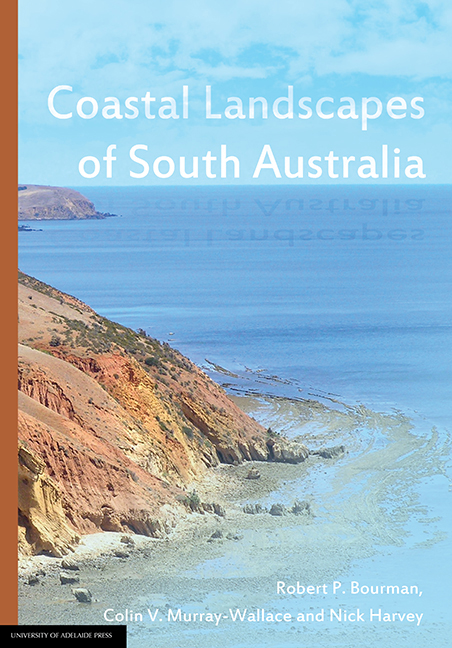Book contents
- Frontmatter
- Dedication
- Contents
- Preface
- Biographies
- Acknowledgements
- 1 Coastal landscapes of South Australia
- 2 The coast of metropolitan Adelaide
- 3 The Fleurieu Peninsula coast
- 4 The River Murray Estuary
- 5 The Coorong Coastal Plain and the Limestone Coast
- 6 The northern Gulf St Vincent tidal coastline (the Samphire Coast)
- 7 The Yorke Peninsula coastline
- 8 The northern Spencer Gulf coast
- 9 The Gulf Coast of Eyre Peninsula
- 10 The Bight Coast - West coast of Eyre Peninsula
- 11 Kangaroo Island
- 12 Explaining the coastal landscapes of South Australia - A synthesis
4 - The River Murray Estuary
Published online by Cambridge University Press: 25 July 2017
- Frontmatter
- Dedication
- Contents
- Preface
- Biographies
- Acknowledgements
- 1 Coastal landscapes of South Australia
- 2 The coast of metropolitan Adelaide
- 3 The Fleurieu Peninsula coast
- 4 The River Murray Estuary
- 5 The Coorong Coastal Plain and the Limestone Coast
- 6 The northern Gulf St Vincent tidal coastline (the Samphire Coast)
- 7 The Yorke Peninsula coastline
- 8 The northern Spencer Gulf coast
- 9 The Gulf Coast of Eyre Peninsula
- 10 The Bight Coast - West coast of Eyre Peninsula
- 11 Kangaroo Island
- 12 Explaining the coastal landscapes of South Australia - A synthesis
Summary
Introduction
The River Murray Estuary is a complex series of waterways comprising Lake Alexandrina, Lake Albert, the Murray Mouth, Coorong Lagoon and the coastal barrier systems of Younghusband and Sir Richard Peninsulas. The region has long been a source of fascination because of its inherent natural beauty, its social and cultural history, and because of the records of explorations by Matthew Flinders, Nicholas Baudin, Charles Sturt, Collet Barker and others. The Coorong became immortalised as the setting for Colin Thiele's novel and film, Storm Boy. Aboriginal people had a finely developed understanding of their environment and occupied the area sustainably for many thousands of years before the arrival of Europeans.
In 1802, Matthew Flinders and Nicholas Baudin, during their charting of the southern Australian coastline, met offshore from the Murray Mouth in Encounter Bay, the outfall of Australia's largest exoreic river system, although neither navigator recognised it. This is not remarkable; they were many kilometres offshore, the coast is low-lying and there were no large freshwater flows containing sediment. Captain Charles Sturt reached the Murray Estuary in 1830 after an intrepid boat trip down the River Murray and was forced to return the same way after his efforts at accessing the sea were thwarted by sand bars in the Goolwa Channel. Hopes were high that the Lower Murray area would support a thriving port and that Goolwa would become the ‘New Orleans of Australia’. However, the mouth could not always be reliably navigated, there was no natural site for a deep-sea port, and the romance of the paddle steamers was finally quashed by the construction of more reliable railways. Today the area has become a focus for conservation, tourism, recreation and retirement.
Physical setting
The arcuate sweeping shoreline of Encounter Bay fringes the seaward margin of the Murray Estuary, stretching from the uplands of the Mount Lofty Ranges towards the southeast (Figure 4.1). It includes part of the longest beach (194 km) in Australia. Unconsolidated sand forms most of the shoreline as long, narrow coastal barriers (Sir Richard and Younghusband Peninsulas) separate the open ocean from the elongate back-barrier lagoons of the Goolwa Channel and Coorong Lagoon. The name 'Coorong’ has been anglicised from the Ngarrindjerii word ‘Kurangh’, which means a long neck of water.
- Type
- Chapter
- Information
- Coastal Landscapes of South Australia , pp. 109 - 144Publisher: The University of Adelaide PressPrint publication year: 2016



